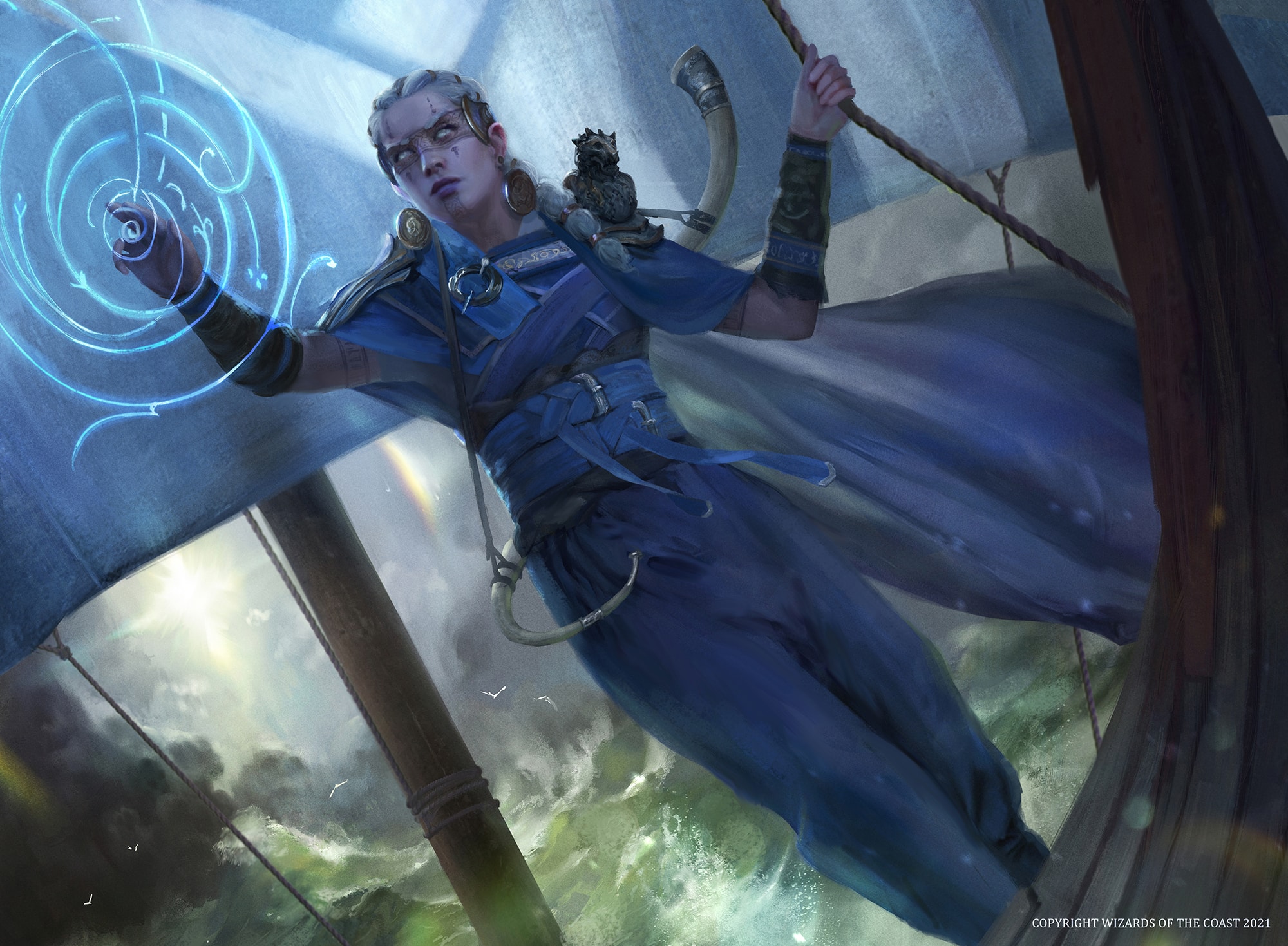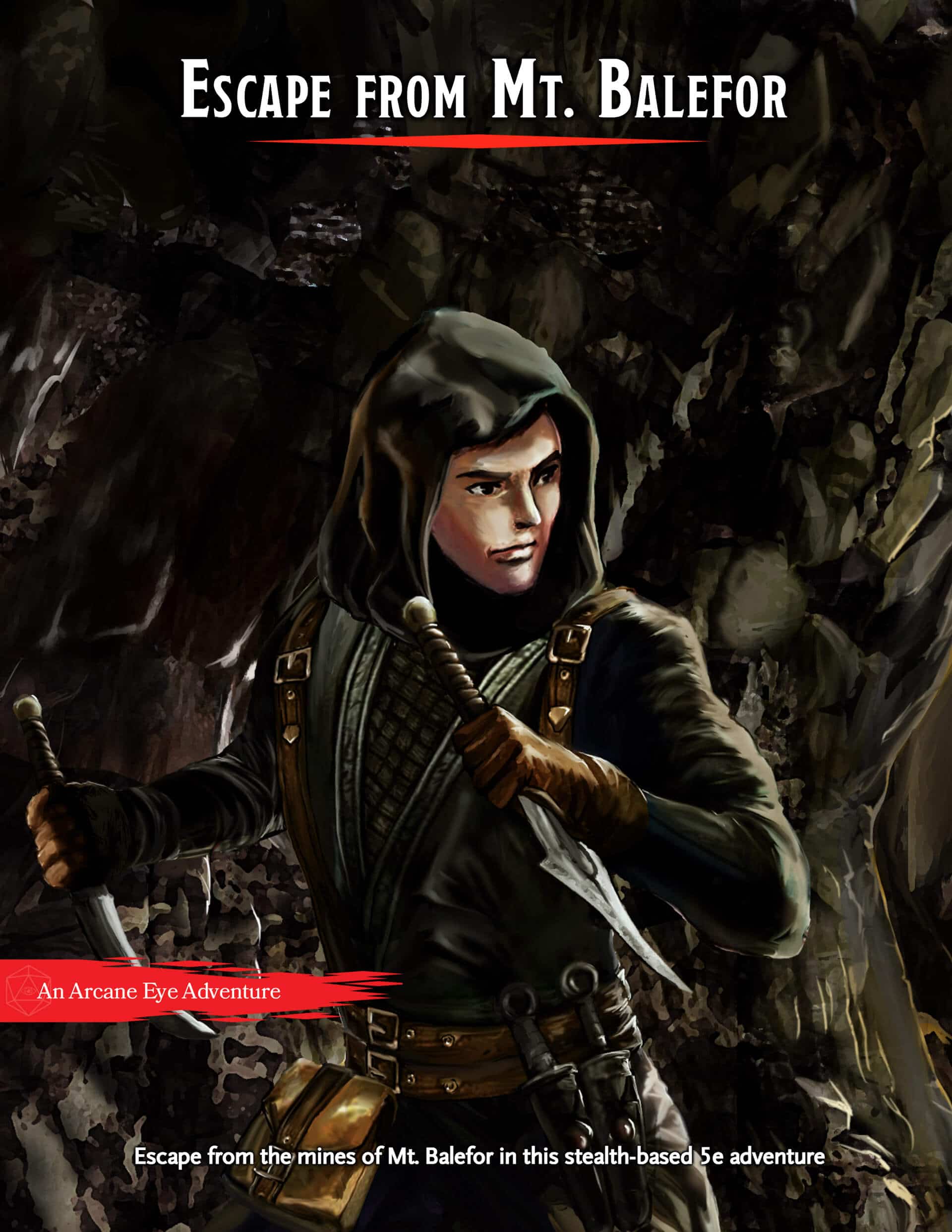Rune Shaper 5e
Published on August 1, 2023, Last modified on September 28th, 2023
Weave the ancient language of the giants into your weapons and armor with the Rune Shaper feat!

Bram Sels - Wizards of the Coast - Inga Rune-Eyes
Arcane Eye may earn a small commission from affiliate links in this article.
Learn more.What Is Rune Shaper 5e?
Rune Shaper is a feat introduced in Bigby Presents: Glory of the Giants that provides the ability to inscribe runes on items, thus allowing you to cast certain spells without expending spell slots.
What are Runes?
Runes are the ancient language of giants that allow them to channel powerful arcane abilities. The runes of power were handed down from Annam, the giant’s all-father, and represent pictographs that hold the meaning of certain words. These runes also hold latent power that can be tapped by “invoking” the runes, which causes them to expend their energy and they must be recharged before they are used again.
How Does Rune Shaper Work?
This feat provides access to certain 1st-level spells. See the “Which 5e Classes Make the Most of Rune Shaper?” section for more information about our color rating scheme if you aren’t familiar.
- Fog cloud: Decent battlefield control option.
- Inflict wounds: Good melee spell option.
- Chromatic orb: Go-to damage spell for low-level wizards and you can avoid the costly diamond component when you invoke the rune.
- Disguise self: If you’re interested in this option, go for the Shadow Touched feat instead.
- Burning hands: Get AoE damage option.
- Speak with animals: Probably not worth it, unless you really like animals.
- Armor of Agathys: Amazing defensive option for martials that will be wading into battle.
- Goodberry: Solid healing option that’s worth it to grab if you don’t already have a druid or ranger in your party.
- Longstrider: Increasing your running speed is a very situational buff.
- Command: Very versatile inside and outside combat.
- Entangle: Really solid battlefield control that’s even useful up into higher levels.
- Sanctuary: Clunky protection spell.
- Thunderwave: Decent AoE option that can be helpful if you’re surrounded and need some space.
You can learn a number of spells equal to half your proficiency modifier, which means you get one spell at 1st level and three spells by 17th level. The best part of this feat is you can “invoke” the rune and cast the spell without using a spell slot, which opens the door to martial characters who want to pick up a certain spell. You can also cast these spells using spell slots, which is a nice bonus for casters looking to expand their repertoire.
You also learn the comprehend languages spell and can cast it once per long rest without expending a spell slot, which is a neat little out-of-combat bonus.
Prerequisites
In order to take this feat, you need the Spellcasting feature or the Rune Carver background.
Is Rune Shaper Good?
In our 5e Feats Tier List, Rune Shaper was given a B Tier rating, making it a niche feat that can improve some builds in D&D 5e.
The versatility this feat offers is quite substantial. Not only are there plenty of solid spells on this list, but you can change them out whenever you level up and even cast them without spell slots. This is a really solid ability when you want to fill a gap in your playstyle, such as adding a potent damage spell (chromatic orb, burning hands), some utility (disguise self, command), healing (goodberry), or defensive bonuses (armor of Agathys).
While this feat provides value for a ton of builds, it’s still not quite as useful as Fey Touched or Shadow Touched, which provide an ASI, a powerful 2nd-level spell and a 1st-level spell from certain schools. Where this feat can excel is if you want to add evocation or abjuration spells to your spell list, because neither of the aforementioned feats provide access to spells from that school.
Which 5e Classes Make the Most of Rune Shaper?
The color code below has been implemented to help you identify, at a glance, how good the Rune Shaper 5e feat is for a specific class/subclass.
- Red isn’t going to contribute to the effectiveness of your character build at all
- Orange Situationally good, but a below-average option otherwise
- Green is a good option
- Blue is a great option, you should strongly consider this option for your character
- Sky Blue is an amazing option. If you do not take this option your character would not be optimized
Pretty much any build can benefit from this feat. One thing to keep in mind, however, is to pick spells that don’t require a spellcasting modifier if you’re not stacked into Charisma, Intelligence, or Wisdom.
Artificer: Great option to pick up chromatic orb for damage or armor of Agathys if you'll be a more melee-minded artificer.
Barbarian: This feat could be worth it for armor of Agathys on its own. The 5 temporary hit points turn into 10 because of your Rage resistances and it punishes creatures for swinging at you. Plus, it has an hour duration and no concentration requirements.
Bard: If you're looking for more damage options, you can grab chromatic orb, inflict wounds, and burning hands
Cleric: Solid option to pick up more utility spells or even armor of Agathys if your wading into battle.
Druid: Druids sorely lack 1st-level damage spells, so grabbing chromatic orb, inflict wounds, and burning hands can help your damage output. Also, Wild Shape-focused druids will love armor of Agathys.
Fighter: Armor of Agathys is a solid choice if you'll be running into battle. Also, taking an AoE spell like burning hands or thunderwave could end up netting a ton of damage if you're surrounded by minions. Make sure to keep your spellcasting modifier at a respectable level if you're going for spells that require a save DC, though.
Monk: Seeing as monks pump Wisdom, this is an awesome feat to stretch the versatility of your martial arts master. Need ranged options? Grab chromatic orb. Need defense? Armor of Agathys. Want to control the battlefield? Entangle or fog cloud. Want some AoE? Burning hands or thunderwave.
Paladin: Paladins normally focus their spell slots on Divine Smites, so this is a good option to get (eventually) 3 extra 1st-level spell slots you can use for spells. Disguise self can go well with your Charisma, and one of the AoE will be particularly effective as you'll be in the fray quite often.
Ranger: This is a great way to stretch your ranger's half-caster spell slots and get a few new options. The utility (command, disguise self) and battlefield control (entangle, fog cloud) options would go particularly well with a rangers playstyle.
Rogue: Getting access to a free casting of disguise self can be awesome, but Shadow Touched can get you that spell plus invisibility and an ASI right away. You'll have to wait until 17th level to get three spells out of Rune Shaper, so it's best to stick with the feat that provides immediate value.
Sorcerer: While this can help increase your sorcerer's versatility, they'll probably get more value out of Shadow Touched or Fey Touched.
Warlock: This can be an interesting option to help pad your warlock's limited spell slots. That said, they already get access to the best of these spells and sometimes have an even better version through invocations.
Wizard: Wizards already get a ton of these spells, so something that offers more value with an ASI or higher-level spells, like Shadow Touched or Fey Touched, is probably going to suit them better.
Fill out the form below to receive Escape From Mt. Balefor for free!
Or follow us on Instagram, Twitter, and YouTube.

